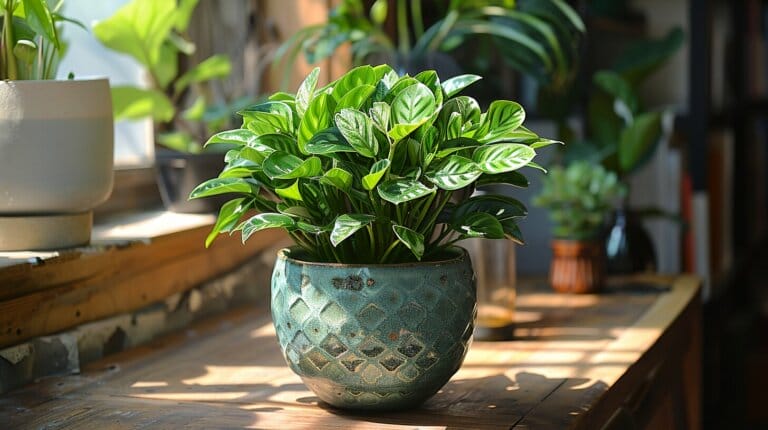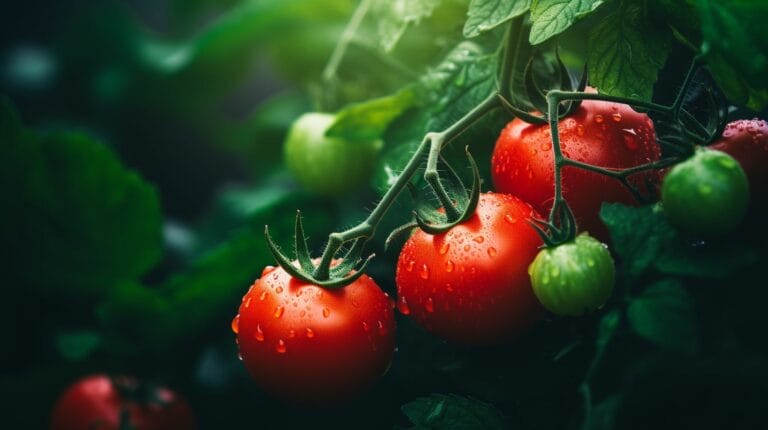How many potatoes from one plant: Understanding the Yield in 1 Seed
Envision this – you’ve successfully nurtured a Kennebec seed potato in the peaceful sanctity of your own garden. With conscientious attention to detail, you’ve cared for the soil to guarantee the balanced nutrition necessary for your potato to flourish. Instead of being distracted by the question of how many potatoes one plant can yield, get ready to relish the rewards of your hard work.
As you unearth the potatoes, questions arise about maximizing your harvest. Is there a strategy to ensure each seed potato yields a bumper crop?
Yields vary, influenced by factors like seed variety, soil health, and care. Let’s delve into these elements and discover how to enhance your garden’s potato production.
Key Takeaways
- Potato variety, soil quality, climate, care regimen, and companion planting impact yield.
- Select certified seed potatoes and consider variety characteristics for better harvests.
- Provide ample sunlight, consistent watering during tuber formation, and use high-phosphorus fertilizer to encourage growth.
- Harvest when foliage yellows and dies back, and store potatoes in a cool, dark, ventilated area, inspecting regularly for rot.
Understanding the Basic Concept: How Many Potatoes from One Plant?

Seed potatoes can produce a varied number of potatoes depending on variety, soil quality, climate, and care. For optimal yield, potatoes require rich, well-drained soil, adequate sunlight, and thoughtful companion planting.
Watering consistency and proper fertilization are critical for robust tuber development. Companion planting maximizes space and helps deter pests and diseases.
Choosing the Right Seed: Planting Potatoes for Maximum Yield

Selecting the right seed potato is critical for garden productivity. Opt for certified seeds tailored to your local conditions. Each variety has unique traits, including yield potential, pest resistance, and maturation times. Match the variety to your garden environment and culinary preferences.
Spacing is vital for plant health, as is soil rich in organic matter. Larger seed pieces with at least one or two eyes encourage more vigorous growth and better yields.
Cultivating Potatoes: How to Grow Potatoes for High Yield

To maximize yield, balance sunlight, water, and nutrients. Potatoes flourish with 6-8 hours of sunlight and consistent watering, especially during tuber formation. High-phosphorus fertilizer promotes growth. Companion planting, such as cucumbers, can enhance moisture retention and reduce pests.
| Companion Planting | Emotional Benefit |
|---|---|
| Cucumber vines cover | Encourages abundance |
| Beneficial insects | Fosters harmony |
| Diverse planting | Creates security |
| Cucumbers and potatoes | Nurtures hope for a bountiful harvest |
Companion plants provide more than space efficiency; they contribute to a higher yield by supporting each other’s needs.
Harvesting and Storage: From Plant to Kitchen

Harvesting and storing correctly ensures your potatoes reach the kitchen fresh. Look for yellowing foliage as a sign of maturity. Gently lift potatoes, and if storing, cure them in a dry, cool place before moving to a dark, cool, ventilated storage area. Regularly inspect for and remove any potatoes showing signs of rot.
Boosting Your Potato Yield: Tips for Gardeners

Increase your next crop’s bounty with these tips:
- Select high-yield varieties suited to your local climate and soil.
- Plant early in spring, post-frost, and ensure ample space for growth.
- Provide plenty of sunlight and consistent moisture.
- Hill your potatoes to encourage more tubers and protect them from sunlight.
Conclusion
The yield from a single potato plant varies, but with proper seed, soil, and care, a significant harvest is achievable. Quality matters as much as quantity. Follow best practices for a rewarding harvest.
Plant your seed potatoes and witness your efforts multiply into a bountiful harvest. Happy gardening!
Can I Plant Yellow Squash and Kale Together to Increase Yield?
Yes, planting yellow squash and kale together can increase yield. The tall, leafy kale provides shade for the low-growing squash, reducing evaporation and keeping the soil moist. Their companion planting also deters pests and maximizes space. Try some delicious yellow squash kale recipes with your harvest!
Frequently Asked Questions
How many potatoes grow from one seed potato?
It varies based on the variety of potatoes and growing conditions, but generally, you can expect to harvest 5-10 potatoes per plant from a single seed.
How many pounds of potatoes can you expect per plant?
Again, this depends on the variety of potatoes and the growing conditions, but on average, one potato plant can produce around 2-3 pounds of potatoes.
How far apart do I need to plant seed potatoes?
Seed potatoes should be planted about 12-15 inches apart in the row, with rows spaced 2-3 feet apart. This ensures that the plants grow well and the potato tubers have enough room to grow.
How to increase the yield of potatoes per plant?
To increase yield, it’s important to provide optimal growing conditions. This includes good quality soil, proper spacing, and regular watering. It might also help to add organic compost or fertilizer around the plant at planting time and throughout the growing season.
How should I store my potatoes once they’ve been harvested?
Potatoes should be stored in a cool, dark, well-ventilated place. They should not be washed immediately on harvest, but instead allowed to dry and then brushed clean.







